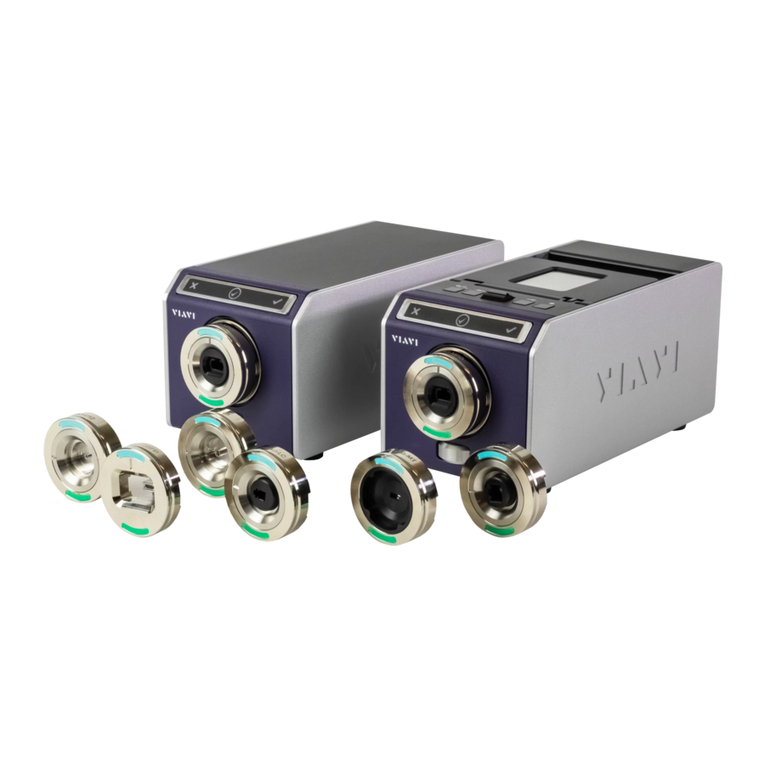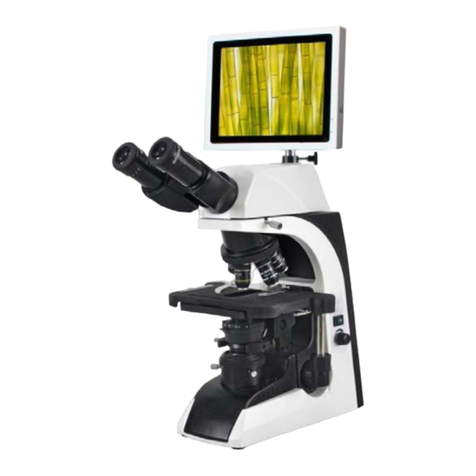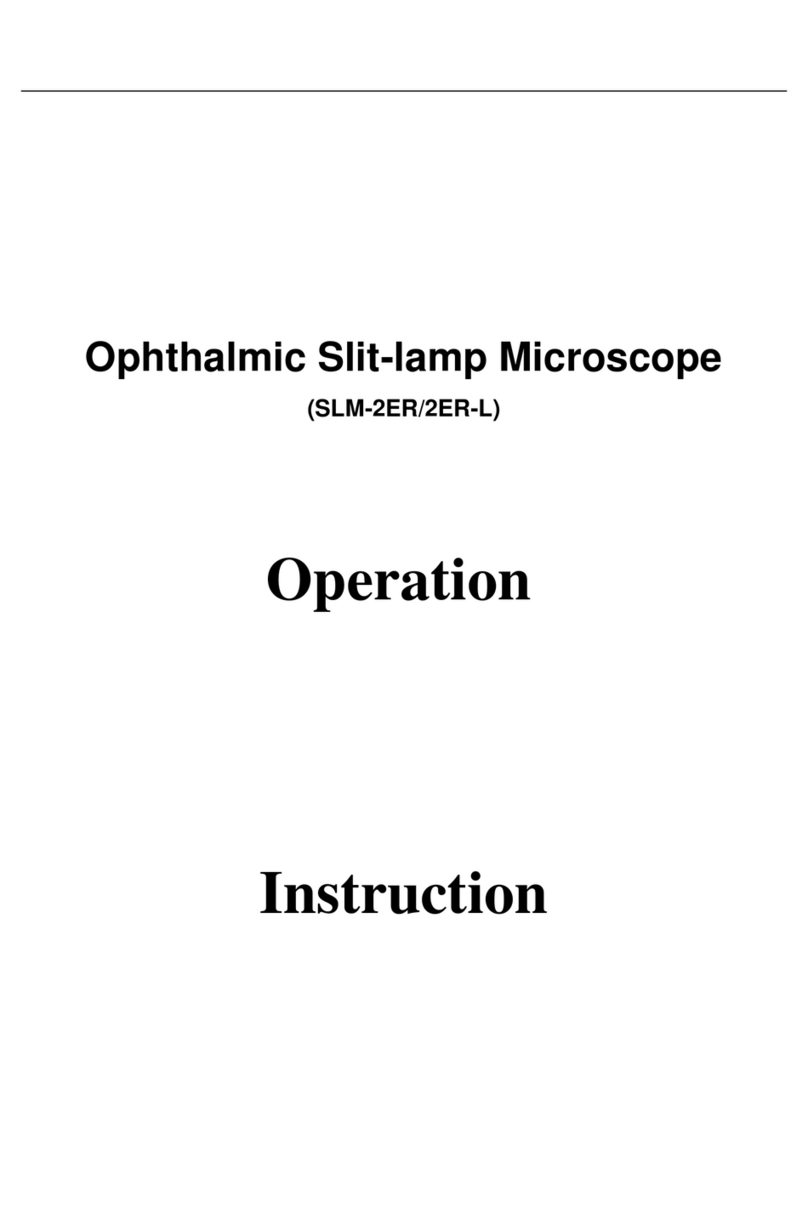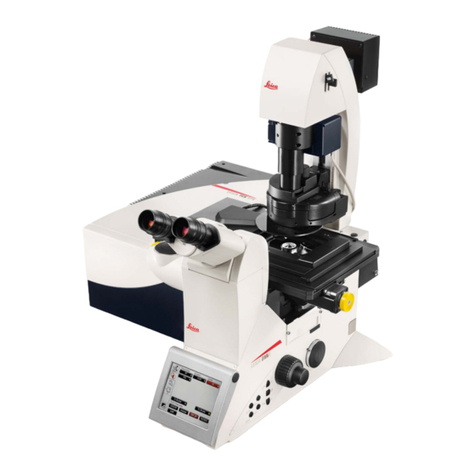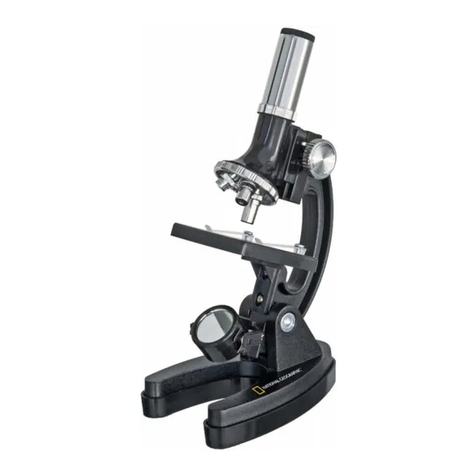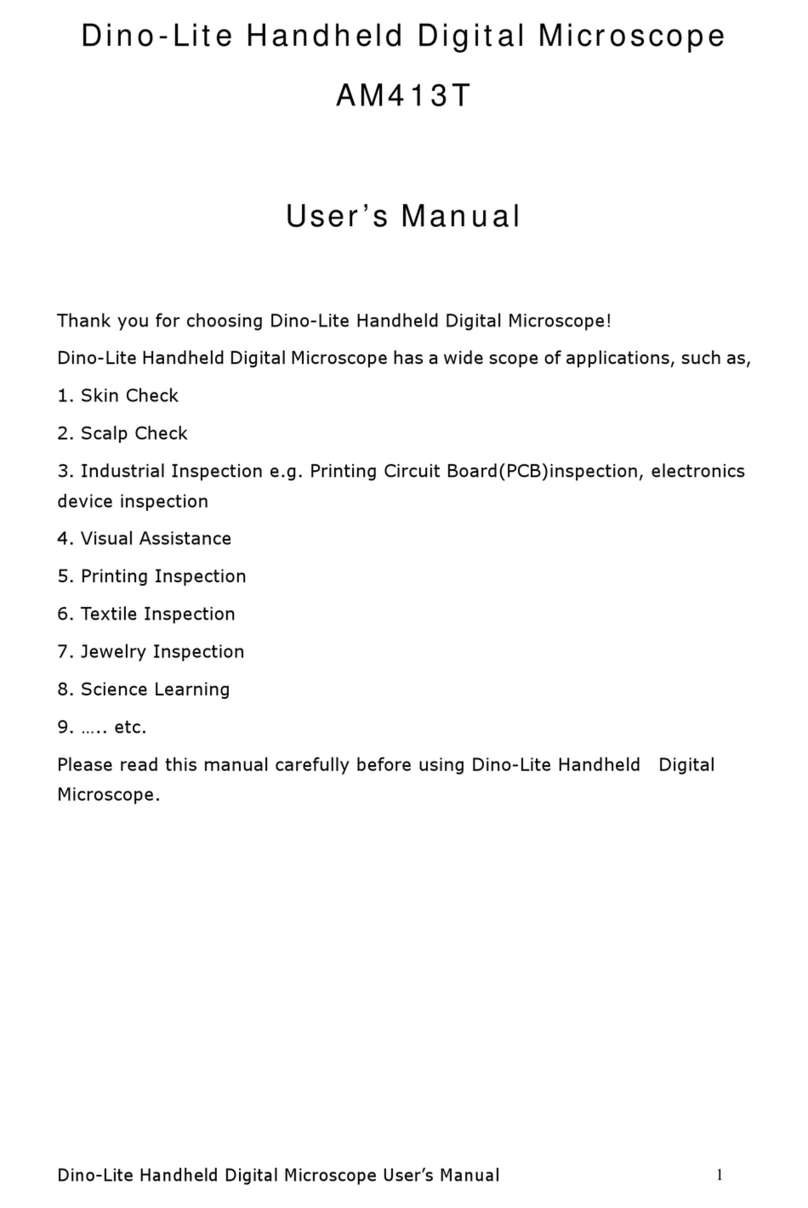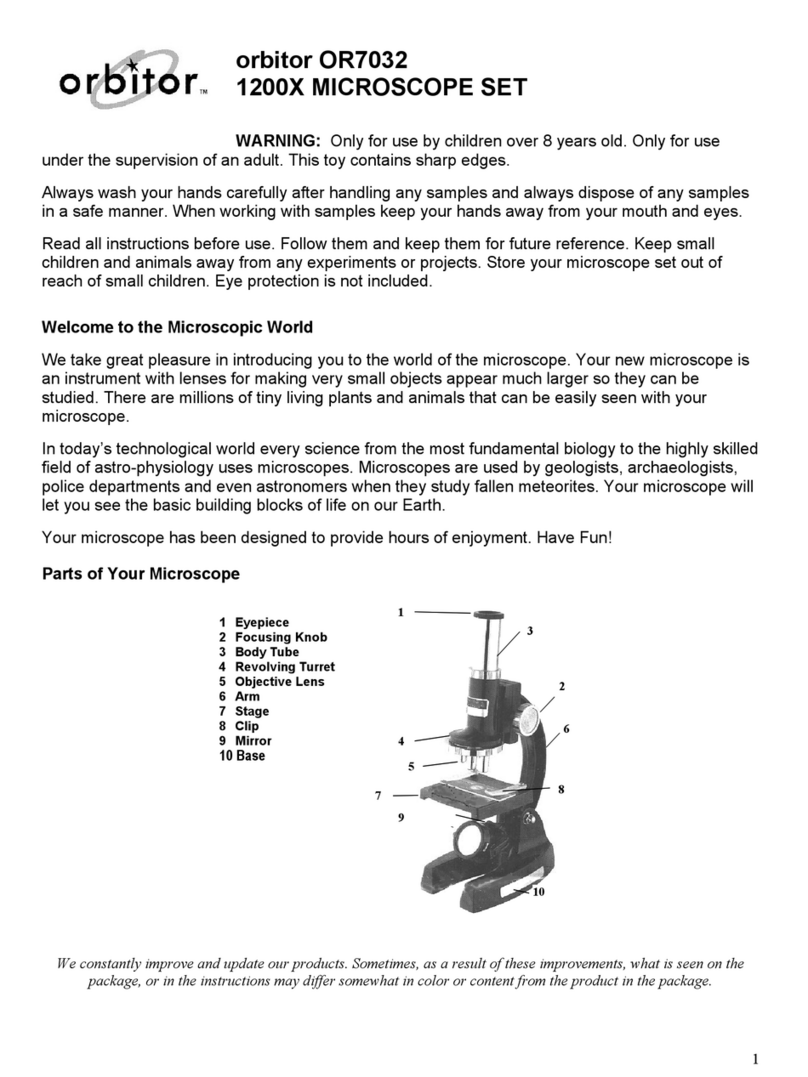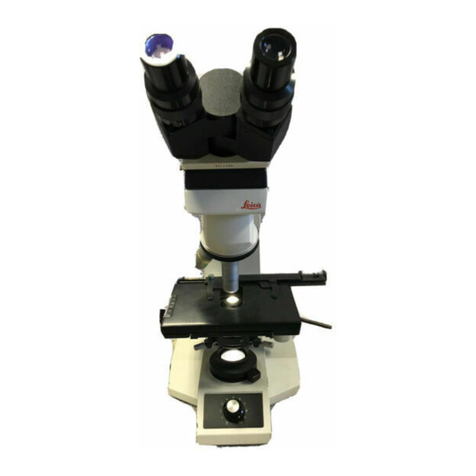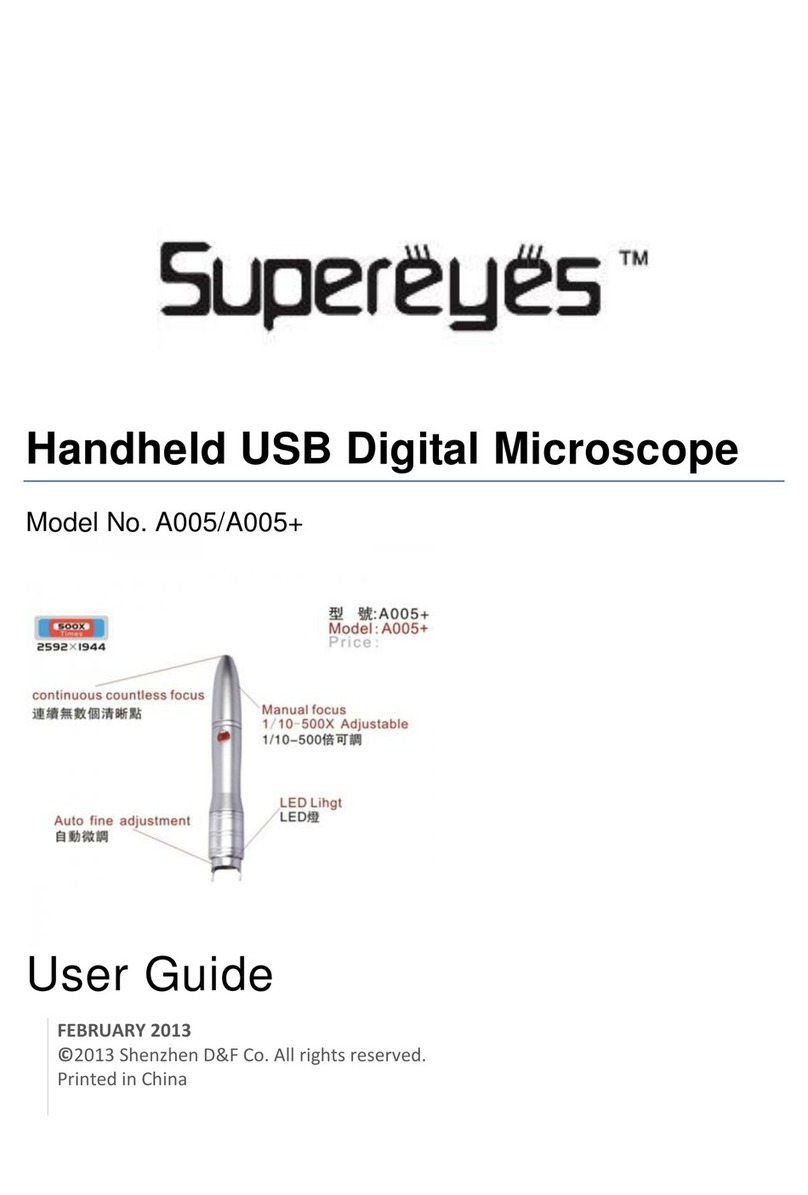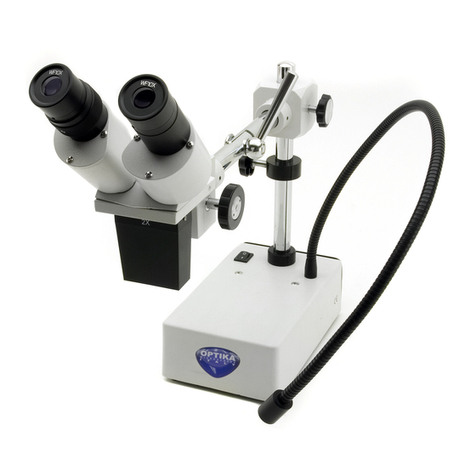Denville Scientific MV130 SERIES User manual

MV130
SERIES
MICROSCOPE
OPERATION MANUAL
Denville Scientific Inc.
3005 Hadley Road, South Plainfield, NJ 07080
Tel: 908-757-7577 Fax: 732-274-1151

2
Denville Scientific MV130 Series Microscope
We thank you for choosing the Denville Scientific Microscope. This precisely built,
durable microscope should give you years of service. Our technical and customer support
departments stand ready to assist you with any questions or comments you may have.
If ever you require an additional accessory or spare part, please contact your local
distributor, or you can contact Denville Scientific for the name of the nearest distributor.
Contents: Page
MV130 Inverted Microscope …………………………………………………… 3
1. About Your MV130 Series Microscope …………………………………… 4
2. Unpacking Your MV130 Microscope …………………………………… 6
3. Assembly of Your MV130 Microscope …………………………………… 7
4. Using Your MV130 Microscope …………………………………………… 8
5. Controls, Calibrations and Alignments …………………………………… 9
6. Lamp Replacement …………………………………………………… 12
7. Phase Contrast Microscopy…………………………………………………… 12
8. Video Microscopy …………………………………………………………… 14
10. Photographic Microscopy (Digital camera) …………………………… 11
11. Maintenance …………………………………………………………… 14

3
Fig. 1 MV130 Series Microscope

4
1. About your Denville Scientific MV130 Series Microscope
The Denville Scientific MV130 series microscopes were modularly designed to suit
different applications. Whether you only need a basic binocular inverted microscope for
brightfield observation, or you may need a full phase contrast inverted microscope with
digital camera attachment, the MV130 series has a model to meet your needs.
1.1 Objectives
MV130 microscope offers a variety of plan objectives and plan phase contrast
objectives. The color-coded, polished objectives are parfocal and parcentric. The
20X and 40X (high dry) are spring loaded to prevent damage. Below is a list of
objectives available to you:
Objective
Description
N.A.
Working
Distance
Marking
4X
LWD* Brightfield
Plan Objective
0.10
25mm
LWD Plan 4/0.1
∞
10X
LWD Brightfield
Plan Objective
0.25
12mm
LWD Plan 10/0.25
∞
10X
Phase
LWD Phase Contrast
Plan Objective
0.25
12mm
LWD Plan ph10/0.25
∞
20X
LWD Brightfield
Plan Objective
0.40
10mm
LWD Plan 25/0.40
∞
20X
Phase
LWD Phase Contrast
Plan Objective
0.40
10mm
LWD Plan ph 25/0.40
∞
40X
LWD Brightfield
Plan Objective
0.60
7mm
LWD Plan 40/0.60
∞
40X
Phase
LWD Phase Contrast
Plan Objective
0.60
7mm
LWD Plan ph 40/0.60
∞
1.2 Oculars (eyepieces)
Two wide field 10X 22mm eyepieces are included with each MV130 microscope.
1.3 Magnifications
With different power of objective, you get different magnification. The following
chart illustrates the relationship:
Eyepiece\Objective
4X
10X
20X
40X
10X eyepiece
40X
100X
200X
400X
15X eyepiece (optional)
60X
150X
300X
600X
5X photo eyepiece
20X
50X
100X
200X
1.4 Filters

5
A filter is used to sharpen contrast. MV130 has a set of filters that can be installed at the
filter slot above the condenser/phase slider. There are four individual filters: Blue, Green,
Yellow and Neutral. All glass filters are finely made to help to even the field and comfort
the observation.
1.5 Observation Head
The head of the MV130 microscope is a seidentoph style. For diopter adjustment,
please refer to Section 5.4. MV130 series microscope offers choice of binocular
model and trinocular model
1.6 C-mount adapter for video or digital imamging
A C-mount adapter comes standard with the MV130 trinocular models. The MV130
series microscope can accommodate two kinds of image processing attachments:
A. Video/Monitor (CCTV )attachment : This setup requires:
MV130 Trinocular model with C-mount adapter
CCTV Camera (with C-thread port, camera cable and power supply)
Color Monitor
B. Digital camera attachment: This setup requires:
MV130 Trinocular model with C-mount adapter
Digital camera with C-thread port and Image Capturing Software
Computer
For more information on set up of the above attachments, please refer to Section 7-9.
1.7 Phase Contrast:
The MV130 Series microscope can be configured for brightfield or phase contrast or
both applications. There are three plan phase contrast objectives available (10x, 20x
and 40x). To setup a phase contrast, the components required are:
Component
Role and Function
Example
Phase contrast
objective
Provides magnification Power &
dark phase ring (built-in)
10x phase objective
Phase annulus ring
slider
Provides bright ring
10x ring on slider
Centering telescope
(optional)
Align the dark phase ring and the
bright ring
centering telescope
For more information on phase contrast microscopy, please refer to Section 6.
1.8 Illumination
1.9

6
Your Denville Scientific MV130 microscope uses high quality electrical
components. The circuit board in the base of the unit contains all the electrical
functions. There are no user repairable parts on the circuit board.
1.9.1 Input: AC 85V-240V/50-60Hz. Unless otherwise specified UL power cord with
USA type of plug is supplied with the microscope.
1.9.2 Output: 12V to a quartz halogen lamp 12V/302 (Replacement p/n: MV130-
7001).
1.9.3 Fuse: A 1.5 Amp fuse protects the circuit board from electrical overload. The
fuse case is located in the back of the microscope near the base. When replacing
the fuse, always install a new one of the same size and amperage (Replacement
part no. MV130-7002).
1.10 Other features:
A large plain stage and an attachable mechanical stage with low mounted coaxial
controls.
Large coarse and fine focusing knobs and focusing tension control
2. Unpacking your Denville Scientific MV130 Microscope
Each Denville Scientific microscope has been packed with utmost care. Please take a
moment to examine the outer and inner cartons for any visual damage. We recommend
that you keep all of the packing material until you have fully assembled, examined and
tested your new microscope. If you note any damage, please contact the shipping
company or your distributor. Unpack your MV130 microscope using the following
checklist for the parts and accessories. (Your specific order may vary).
Components
IV951
IV951T
IV952
IV952T
IV953
IV953T
Stand with binocular head
1
1
1
Stand with trinocular head
1
1
1
Illuminator and condenser
1
1
1
1
1
1
10x eyepieces
2
2
2
2
2
2
4Xxobjective
1
1
1
1
1
1
10x objective
1
1
1
1
20x objective
1
1
40x objective
1
1
10x phase
1
1
20x phase
1
1
1
1
40x phase
1
1
1
1
Phase annulus slider
1
1
1
1
Phase centering telescope
1
1
1
1
C-mount adapter
1
1
1
Halogen lamp
1
1
1
1
1
1
Attachable mechanical stage
1
1
1
1
1
1
Fuse 1.5A
1
1
1
1
1
1
Allen key and screw
1ea.
1ea.
1ea.
1ea.
1ea.
1ea.
Dust cover
1
1
1
1
1
1
Manual
1
1
1
1
1
1

7
3. Assembly of Your MV130 Microscope
3.1 Remove the stand of the microscope and place it on a sturdy, dust free surface. Take
all the components from the packing foam and put on the table. The exploded picture
below shows how the components are related and installed.
3.2 Hold the illuminator and condenser and set it in the way as showed in the picture
below. Drop the black condenser portion all the way down until it sits on the mount.
Then rotate it 90 degree counter clockwise. Align the tapped hole on the condenser
with the through hole on the front of the mount. Use the locking Allen screw to lock
the illuminator-condenser in position. The Allen is included in the package.
Note: In case the illuminator-condenser needs to be removed just reverse the above steps.
3.3 The lamp house is preinstalled into the illuminator. Connect the 12V power connector
to the lamp house.

8
3.4 Locate the nosepiece underneath the plain stage (where the objectives will go), and
remove the plastic dust plugs. Save these in the accessory box. Install the objectives.
Each objective is packed in an individual plastic container. Remove each objective
from its container, and save the containers in the accessory box. Install the objectives
in the following order: 4x, 10x, 20x and 40x.
3.5 Attach the attachable mechanical stage to the right side of the plain stage. Lock the
attachable mechanical stage on with two thumbscrews from underneath.
Note: If the specimen dish/container size is too large you may remove the attachable
mechanical stage.
3.6 Put the stage insert into position.
3.7 Unwrap the protective tissue from the oculars (eyepieces) and install one in each eye
tube.
3.8 The glass filters may be wrapped in protective tissue. To install the filter, simply
insert the filter into the filter holder and slide the filter holder into the open slot above
the condenser. To remove the filter, just pull gently toward you. Store the filter in a
clean bag when not in use.
3.9 Plug the power cord to the back of the MV130 microscope to finish the installation.
4. Using Your Denville Scientific MV130 Microscope
Note: If your microscope has been exposed to extremes of temperature, please allow time
for all the parts to come to room temperature before turning on the power. Excess cold
can fog the lenses and may cause the lamp to fail.
4.1 Once you have assembled all the parts, plug the power cord into the appropriate AC
outlet.
4.2 Turn the light on using the rocker switch on the right side of the base. Next, adjust the
light intensity by turning the brightness adjustment wheel located on the left side of
the base. Note: Rapid repeated changes in light intensity would dramatically shorten
the life of the quartz halogen lamp.
4.3 In order to speed your familiarity with controls, choose a specimen slide you are
familiar with, such as an old hematology slide or choose a petri dish with a culture
sample.
4.4 Move the slide or petri dish to the center of the stage, by turning the stage control
knobs, just below the stage on the right side. These knobs allow you to move the slide
or petri dish on the X-Y axis (forward / backward and left /right).
4.5 Open the aperture diaphragm on the condenser (controlled by the small black lever
above the condenser). Turn the nosepiece to bring the 4X objective into place.

9
4.6 Once you are comfortably seated, look into the oculars and move the eyepiece tubes
together or apart until you see only one complete circle of light. You have now
adjusted your interpupillary distance.
4.7 Using the coarse adjustment knob to bring the 4X objective into focus. You should
see a full of view (a round circle with even background). If you see any cutting edge,
this indicates the microscope condenser is not properly aligned. Please refer to
Section 5.1 for aligning the condenser. If the background is not even, the lamp may
not be centered. Section 5.2 explains how to center the lamp.
4.8 Turn the nosepiece and bring 10x into place. Use the fine adjustment knob to bring
the field of view into focus. Now move the 40x objective into place. You will feel a
“clicking” action when the objective is seated properly. Again, focus ONLY with fine
focusing knob for the best image. You will now be in the middle of the focus range.
You may have to adjust the aperture diaphragm (on the condenser) for the best
contrast.
4.9 Diopter adjustment: Please refer to section 5.4 for details.
4.10 Focusing Tension Control: Please refer section 5.5 for details.
You are now ready to use your Denville Scientific MV130 microscope.
5. Controls, Calibrations and Alignments
This chapter is written to help you get familiar with all the components and controls.
5.1 Condenser Assembly
5.1.1 About the condenser assembly
Condenser assembly is located between the lamp house and the stage. The
condenser assembly consists of condenser with phase slider slot and iris
diaphragm. For MV130 with phase contrast configuration the phase annulus slider
is installed into the phase slider slot.

10
The condenser is pre-centered, mounted underneath the lamp house and secured
with locking screw. The whole condenser assembly is removable from the mount.
Unscrew the locking screw, rotate 90 degree to pull the illuminator-condenser unit
out.
5.1.2 Condenser Position
The condenser can be removed for large culture bottles or other containers. The
working space is 50mm with condenser in the optical path. The maximum working
space is 150 mm with condenser removed from the optical path.
5.2 Lamp Alignment
The lamp is pre-centered. When replacing lamp make sure to insert the lamp to the
lamp socket and push the lamp-holder unit back completely
5.3 Phase Contrast Alignment
Please refer to the phase contrast observation Section 6 for details.
5.3 Diopter Adjustment
Since you are using a binocular microscope, you have to adjust for the normal
difference in vision between your two eyes. This is a simple but critical
adjustment! Your MV130 microscope has a diopter adjustment ring located on the
left eye tube of the seidentoph head. Follow the procedures below:
Close your left eye and with your right eye open, look into the right ocular.
Adjust the fine focus to give you the best image.
On the left ocular tube you will see that there is an adjustment ring.
Close your right eye and look with your left eye into the left ocular. Rotate the
adjustment (diopter) ring on the left ocular tube until you see a clear focused field.
5.4 Focusing Tension Control
Focus tension has been pre-adjusted at Denville Scientific. If needed, the focus
tension can be adjusted at any time without tools. To adjust the tension of your
focusing controls, simply turn the tension control ring. This knurled ring is located on
the right side between the microscope stand and the focusing knob.
Note: Removing too much tension may cause the nosepiece assembly to drift down.
6. Lamp Replacement
Caution: Always unplug the microscope before changing the lamp. Make sure the lamp
house and lamp have cooled down completely.
Allow the microscope to cool down if recently in use. Use only a 12v 20w halogen lamp
Part number: MV130-7001. When handling a new lamp, be sure not to touch the glass

11
portion with your fingers. Oil and sweat on the bulb may cause it to explode or shatter as
it heats up.
6.1 The lamp house is located on top of the illuminator. Hold and pull the lamp house to
remove it.
6.2 Gently pull the old bulb out and discard.
6.3 Hold the new bulb with a lint-free tissue or piece of cloth. Gently insert the two metal
pins on the base of the bulb into the lamp holder. This is a friction fit and you may
have to very gently rock the bulb back and forth as you insert it into the socket. Never
attempt to spread the pins, as this will result in immediate damage to the new lamp.
6.4 Put the lamp house back. Lamp center should be maintained with replacement lamp.
7. Phase Contrast Observation
7.1 About phase contrast microscopy setup
A phase contrast microscope is setup differently than a typical bright-field microscope.
To create a phase contrast observation environment, a phase ring (dark ring- Fig. 4) and a
phase annulus (bright ring-Fig. 4) are required in the optical system. The dark phase ring
is installed in the phase objective, and the phase annulus (bright ring) is installed in the
annulus ring slider. For best phase contrast results, both rings must be overlapped (Fig. 5)
so that no DIRECT light can pass directly to the eyepieces from the illuminator.
Objective
Phase ring
(Dark ring)
Phase Annulus Ring
(Bright ring)
Not overlapped Overlapped
Fig. 4 Phase Alignment (1) Fig. 5 Phase Alignment (2)
Phase contrast set usually includes the following items:
1 ea. Phase contrast objective

12
1 ea. Phase annulus ring (phase annulus slider)
1 ea. Centering telescope (for centering)
7.2 Why is phase contrast alignment necessary?
For optimal use, the alignment must always be maintained to ensure that the phase
ring annulus rings are overlapped. Proper alignments include:
Optical alignment of the condenser with the microscope optical path (pre-
aligned)
Alignment of phase annulus ring (centerable) with the phase ring in objective
(stationary):
Phase annulus ring (bright ring) Phase ring in objective (dark ring)
7.3 Align the phase contrast system
Let us use 10x phase contrast set as example to check and align the system.
Turn 10X phase objective into working position. Open the field diaphragm
and iris diaphragm. Insert the green filter into optical path.
Remove the right eyepiece from eyepiece tube. Insert the centering telescope
in the right eyepiece tube. Loosen the locking screw on the telescope.
Look through the telescope and see the dark ring in the 10X objective. If the
phase ring is not in sharp focus, push or pull the top portion of the telescope
until you see a sharp ring image. Lock the telescope with the locking screw.
Push or pull the phase annulus slider to bring the 10x phase annulus into the
optical path. Make sure it slides all the way into its position and clicks. This
will bring the 10x phase annulus ring into the optical system (working
position).
Look through the telescope. If the phase annulus ring is overlapping with the
phase ring in the objective, you will only see a dark ring in a light-dark
background and there is no direct bright light coming through. If you see
bright light is “escaping” out, this indicates that the phase annulus ring is not
centered. You need to align the phase annulus.
The phase annulus is pre-aligned. There are centering-setting screws on the
phase annulus slider. If realignment is required, pull the slide out so that you
can access to those small screws. Reset the screw and push back the slide to

13
recheck the alignment. You may need to repeat the same procedures for more
than one time to get the best alignment.
Repeat the same procedures for all other phase contrast objectives.
8. Video microscopy
Illustrated set up instruction:
Cable
Internal C-thread Mount
External C-mount
Video Microscopic System for the MV130 Inverted
9. Digital photographic microscopy (Digital camera)
Illustrated set up instruction:
Video Camera
(CCTV)
C-mount
Adapter
(IV950 Trino model)
IV950
TRINOCULAR MODEL
Monitor
DC adapter

14
Cable
Internal C-thread Mount
External C-mount
10. Maintenance
11.1 Always cover your microscope with the dust cover when not in use.
11.2 When cleaning the lenses, use lens paper or a Q-tip dipped in lens cleaning solution.
11.3 Excess immersion oil should be cleaned of at once. An alcohol pad is best for
removing oil from the stage and on the other metal parts, but is not recommended
for use on the lenses.
11.4 Dust in the nosepiece or ocular tubes should be blown out using only filtered air.
Canned air dusters work well for this job.
11.5 Whenever you remove an objective, we recommend that you place it back into the
original plastic shipping vial until ready to be placed back on the microscope. This
will keep the objective safe from dust and other foreign matter.
11.6 To keep your Select microscope in top condition for years, we recommend that you
have the microscope professionally serviced once a year.
Digital Camera
C-mount
Adapter
IV950
TRINOCULAR MODEL
Computer &
computer monitor
Table of contents
Other Denville Scientific Microscope manuals
Popular Microscope manuals by other brands
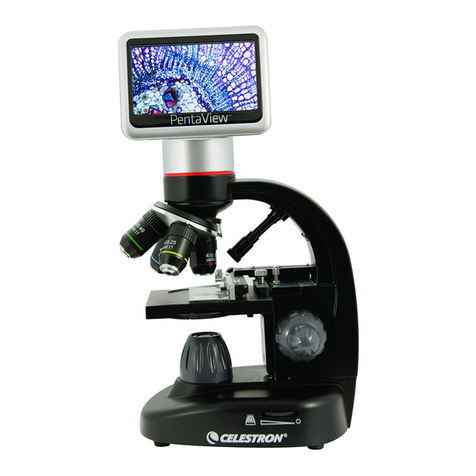
Celestron
Celestron PentaView 44348 instruction manual
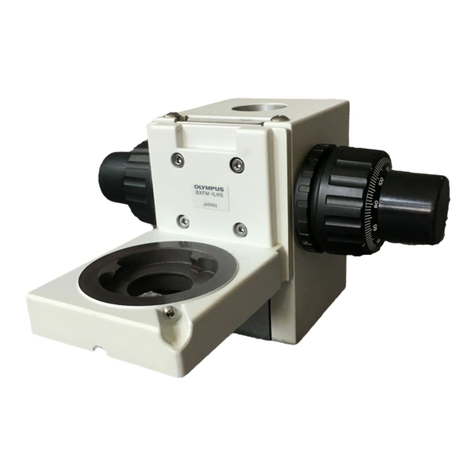
Olympus
Olympus BXFM Series instructions

Stalwart
Stalwart STM-2080 instruction manual

Ken A Vision
Ken A Vision VisionScope 2 T-22011 instruction manual
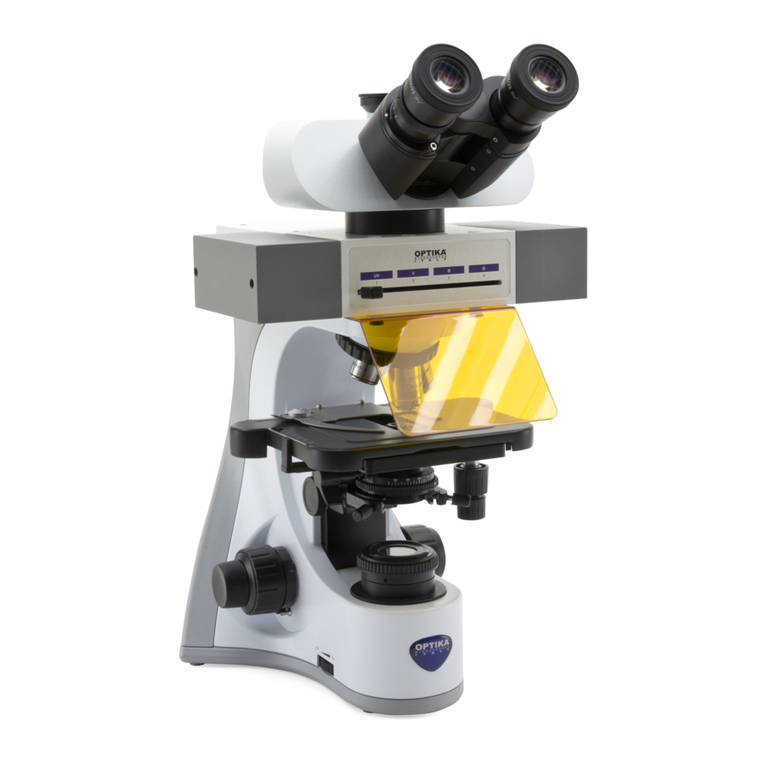
Optika Italy
Optika Italy B-510 Series instruction manual
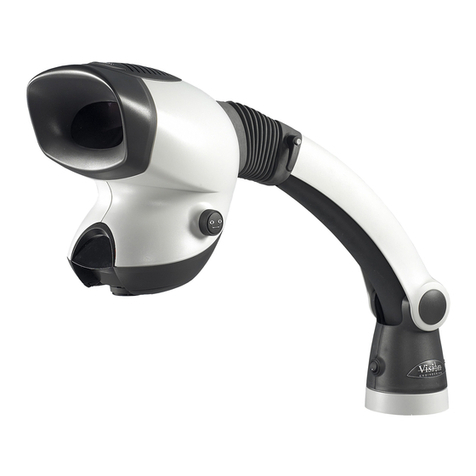
Vision Engineering
Vision Engineering Mantis Compact user guide



